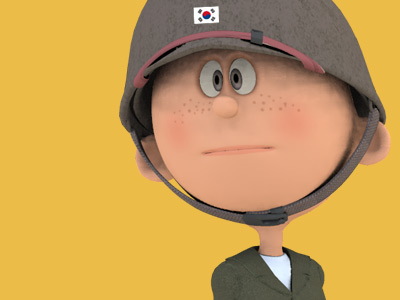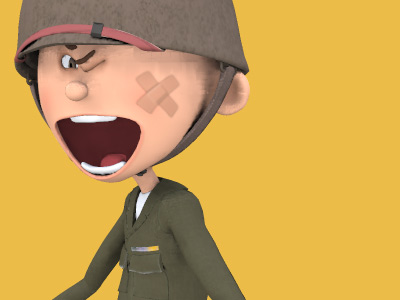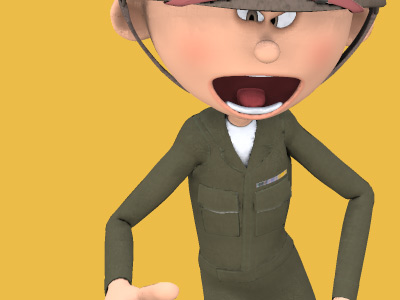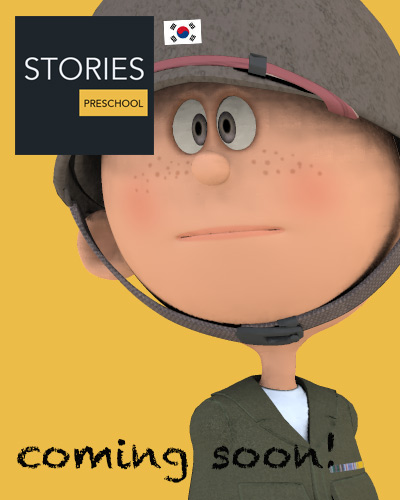Korean War 한국전쟁 (1950-1953)
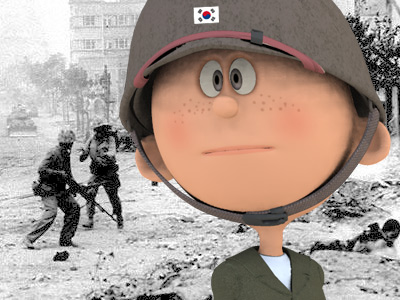
UN Forces Cross Partition Line (September – October 1950)
On 27 September, MacArthur received the top secret National Security Council Memorandum 81/1 from Truman reminding him that operations north of the 38th parallel were authorized only if "at the time of such operation there was no entry into North Korea by major Soviet or Chinese Communist forces, no announcements of intended entry, nor a threat to counter our operations militarily..." On 29 September MacArthur restored the government of the Republic of Korea under Syngman Rhee. On 30 September, Defense Secretary George Marshall sent an eyes-only message to MacArthur: "We want you to feel unhampered tactically and strategically to proceed north of the 38th parallel." During October, the ROK police executed people who were suspected to be sympathetic to North Korea North Korea, officially the Democratic People's Republic of Korea (DPRK) is a country in East Asia, in the northern part of the Korean Peninsula. The capital and largest city is Pyongyang. The Korean Demilitarized Zone marks the boundary between North Korea and South Korea. The legitimacy of this border is not accepted by either side, as both states claim to be the legitimate government of the entire peninsula., and similar massacres were carried out until early 1951.
North Korea, officially the Democratic People's Republic of Korea (DPRK) is a country in East Asia, in the northern part of the Korean Peninsula. The capital and largest city is Pyongyang. The Korean Demilitarized Zone marks the boundary between North Korea and South Korea. The legitimacy of this border is not accepted by either side, as both states claim to be the legitimate government of the entire peninsula., and similar massacres were carried out until early 1951.
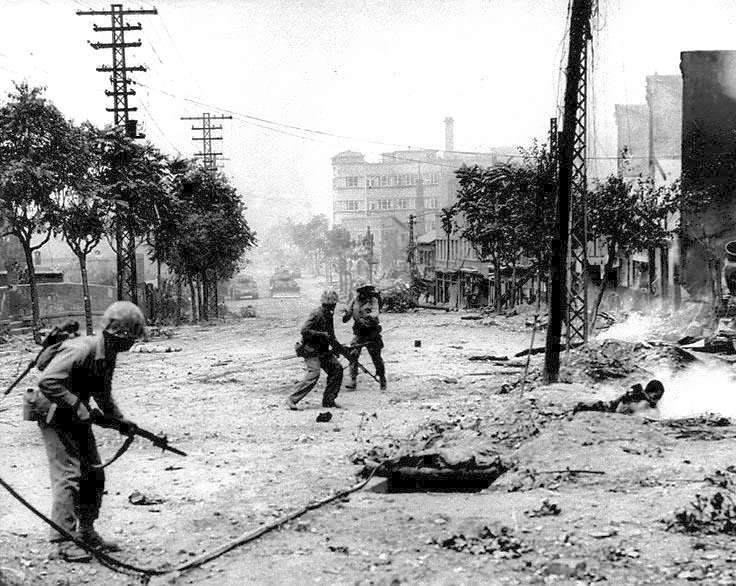
Combat in the streets of Seoul

Combat in the streets of Seoul
( Click image to enlarge)
On 30 September, Zhou Enlai warned the United States The United States of America (U.S.A. or USA), commonly known as the United States (U.S. or US) or America, is a country in North America. It is the world's third-largest country by both land and total area. The United States shares land borders with Canada to its north and with Mexico to its south. The national capital is Washington, D.C., and the most populous city and financial center is New York City. that China was prepared to intervene in Korea if the United States crossed the 38th parallel. Zhou attempted to advise North Korean commanders on how to conduct a general withdrawal by using the same tactics which had allowed Chinese communist forces to successfully escape Chiang Kai-shek's Encirclement Campaigns in the 1930s, but by some accounts North Korean commanders did not utilize these tactics effectively. Historian Bruce Cumings argues, however, the KPA's rapid withdrawal was strategic, with troops melting into the mountains from where they could launch guerrilla raids on the United Nations (UN)
The United States of America (U.S.A. or USA), commonly known as the United States (U.S. or US) or America, is a country in North America. It is the world's third-largest country by both land and total area. The United States shares land borders with Canada to its north and with Mexico to its south. The national capital is Washington, D.C., and the most populous city and financial center is New York City. that China was prepared to intervene in Korea if the United States crossed the 38th parallel. Zhou attempted to advise North Korean commanders on how to conduct a general withdrawal by using the same tactics which had allowed Chinese communist forces to successfully escape Chiang Kai-shek's Encirclement Campaigns in the 1930s, but by some accounts North Korean commanders did not utilize these tactics effectively. Historian Bruce Cumings argues, however, the KPA's rapid withdrawal was strategic, with troops melting into the mountains from where they could launch guerrilla raids on the United Nations (UN)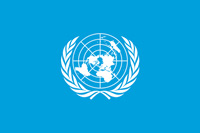 United Nations (UN) is an intergovernmental organization whose stated purposes are to maintain international peace and security, develop friendly relations among nations, achieve international cooperation, and be a centre for harmonizing the actions of nations. The UN was established after World War II with the aim of preventing future world wars, succeeding the League of Nations, which was characterized as ineffective. forces spread out on the coasts.
United Nations (UN) is an intergovernmental organization whose stated purposes are to maintain international peace and security, develop friendly relations among nations, achieve international cooperation, and be a centre for harmonizing the actions of nations. The UN was established after World War II with the aim of preventing future world wars, succeeding the League of Nations, which was characterized as ineffective. forces spread out on the coasts.
By 1 October 1950, the UN Command repelled the KPA northwards past the 38th parallel; the ROK Army crossed after them, into North Korea. MacArthur made a statement demanding the KPA's unconditional surrender. Six days later, on 7 October, with UN authorization, the UN Command forces followed the ROK forces northwards. The X Corps landed at Wonsan (in southeastern North Korea) and Riwon (in northeastern North Korea), already captured by ROK forces. The Eighth U.S. Army and the ROK Army drove up western Korea and captured Pyongyang city, the North Korean capital, on 19 October 1950. The 187th Airborne Regimental Combat Team ("Rakkasans") made their first of two combat jumps during the Korean War on 20 October 1950 at Sunchon and Sukchon. The missions of the 187th were to cut the road north going to China, preventing North Korean leaders from escaping from Pyongyang; and to rescue American prisoners of war. At month's end, UN forces held 135,000 KPA prisoners of war. As they neared the Sino-Korean border, the UN forces in the west were divided from those in the east by 50–100 miles of mountainous terrain.
Taking advantage of the UN Command's strategic momentum against the communists, General MacArthur believed it necessary to extend the Korean War into China to destroy depots supplying the North Korean war effort. President Truman disagreed, and ordered caution at the Sino-Korean border.
HISTORY
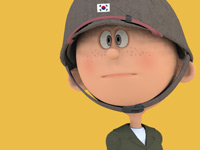
RESOURCES
This article uses material from the Wikipedia article "Korean War", which is released under the Creative Commons Attribution-Share-Alike License 3.0.
© Stories Preschool. All Rights Reserved.
